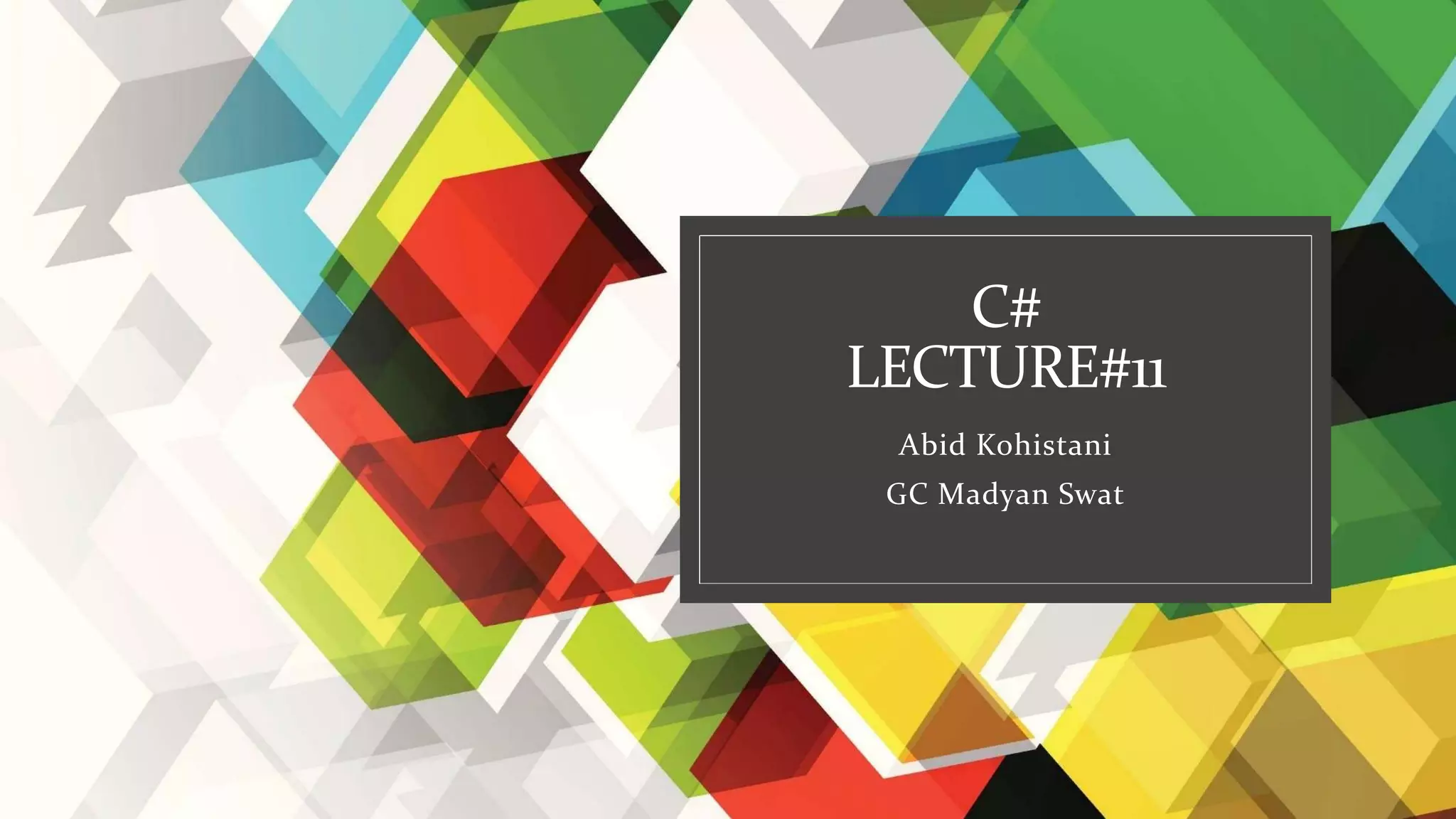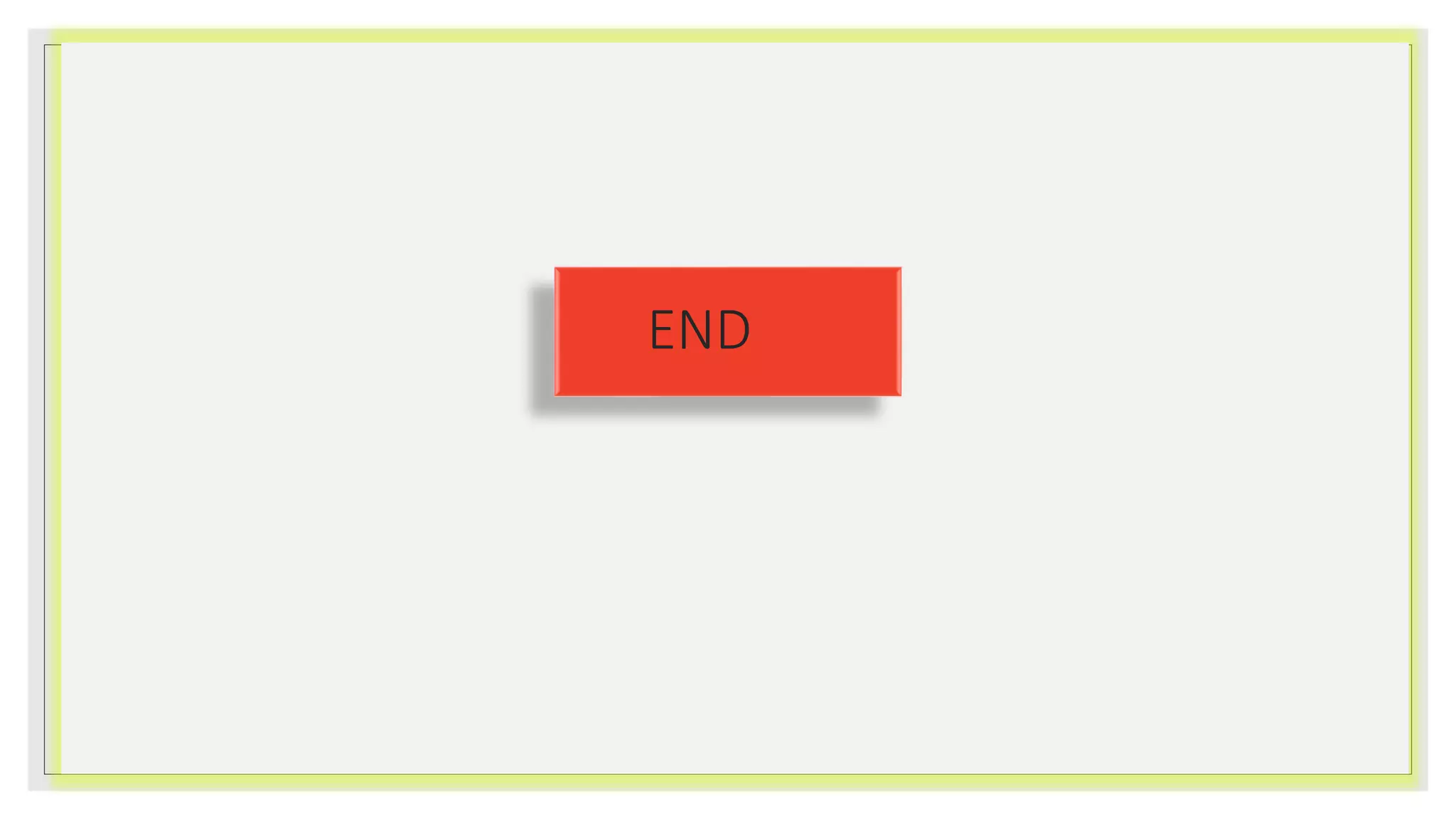The document explains polymorphism in C#, emphasizing its forms: static and dynamic. Static polymorphism is implemented through function and operator overloading, while dynamic polymorphism involves abstract classes that allow for partial implementation of methods. It also covers how abstract methods work, their restrictions, and demonstrates both types of polymorphism through code examples.


![Function Overloading
You can have multiple definitions for the same function name in the same scope.
The definition of the function must differ from each other by the types and/or the number of arguments in the
argument list.
You cannot overload function declarations that differ only by return type.
Example
using System;
namespace PolymorphismApplication {
class Printdata {
void print(int i) {
Console.WriteLine("Printing int: {0}", i );
}
void print(double f) {
Console.WriteLine("Printing float: {0}" , f);
}
void print(string s) {
Console.WriteLine("Printing string: {0}", s);
}
static void Main(string[] args)
{ Printdata p = new Printdata(); // Call print to print integer
p.print(5); // Call print to print float
p.print(500.263); // Call print to print string
p.print("Hello C++");
Console.ReadKey();
}
}
}](https://image.slidesharecdn.com/clecture11-201217182306/75/Polymorphism-in-C-Function-overloading-in-C-3-2048.jpg)

![The following program demonstrates an abstract class
Example
using System;
namespace PolymorphismApplication
{
abstract class Shape {
public abstract int area();
}
class Rectangle: Shape
{
private int length;
private int width;
public Rectangle( int a = 0, int b = 0)
{
length = a; width = b;
}
public override int area ()
{
Console.WriteLine("Rectangle class area :");
return (width * length);
}
}
class RectangleTester {
static void Main(string[] args)
{ Rectangle r = new Rectangle(10, 7);
double a = r.area();
Console.WriteLine("Area: {0}",a);
Console.ReadKey();
}
}
}](https://image.slidesharecdn.com/clecture11-201217182306/75/Polymorphism-in-C-Function-overloading-in-C-5-2048.jpg)
![Example
Example explained
The output from the example above was probably
not what you expected. That is because the base
class method overrides the derived class method,
when they share the same name.
class Animal // Base class (parent)
{
public void animalSound()
{
Console.WriteLine("The animal makes a sound");
}
}
class Pig : Animal // Derived class (child) {
public void animalSound()
{
Console.WriteLine("The pig says: wee wee");
}
}
class Dog : Animal // Derived class (child) {
public void animalSound() {
Console.WriteLine("The dog says: bow wow");
}
}
class Program {
static void Main(string[] args)
{
Animal myAnimal = new Animal(); // Create a Animal object
Animal myPig = new Pig(); // Create a Pig object
Animal myDog = new Dog(); // Create a Dog object
myAnimal.animalSound();
myPig.animalSound();
myDog.animalSound(); } }
The animal makes a sound
The animal makes a sound
The animal makes a sound
output](https://image.slidesharecdn.com/clecture11-201217182306/75/Polymorphism-in-C-Function-overloading-in-C-6-2048.jpg)
![Example 2
Example explained
However, C# provides an option to override the
base class method, by adding the virtual keyword
to the method inside the base class, and by using
the override keyword for each derived class
methods:
The animal makes a sound
The pig says: wee wee
The dog says: bow wow
output
class Animal // Base class (parent)
{
public virtual void animalSound()
{
Console.WriteLine("The animal makes a sound");
} }
class Pig : Animal // Derived class (child)
{
public override void animalSound() {
Console.WriteLine("The pig says: wee wee");
} }
class Dog : Animal // Derived class (child) {
public override void animalSound() {
Console.WriteLine("The dog says: bow wow"); } }
class Program {
static void Main(string[] args) {
Animal myAnimal = new Animal(); // Create a Animal
object
Animal myPig = new Pig(); // Create a Pig object
Animal myDog = new Dog(); // Create a Dog object
myAnimal.animalSound();
myPig.animalSound();
myDog.animalSound();
} }](https://image.slidesharecdn.com/clecture11-201217182306/75/Polymorphism-in-C-Function-overloading-in-C-7-2048.jpg)


![Example
Example
// Abstract class
abstract class Animal
{ // Abstract method (does not have a body)
public abstract void animalSound();
// Regular method
public void sleep()
{
Console.WriteLine("Zzz");
}
}
// Derived class (inherit from Animal)
class Pig : Animal
{
public override void animalSound()
{
// The body of animalSound() is provided here
Console.WriteLine("The pig says: wee wee");
}
}
class Program
{
static void Main(string[] args)
{
Pig myPig = new Pig();// Create a Pig object
myPig.animalSound();// Call the abstract method
myPig.sleep(); // Call the regular method
} }
Why And When To Use Abstract Classes
and Methods?
To achieve security - hide certain details
and only show the important details of
an object.](https://image.slidesharecdn.com/clecture11-201217182306/75/Polymorphism-in-C-Function-overloading-in-C-10-2048.jpg)
